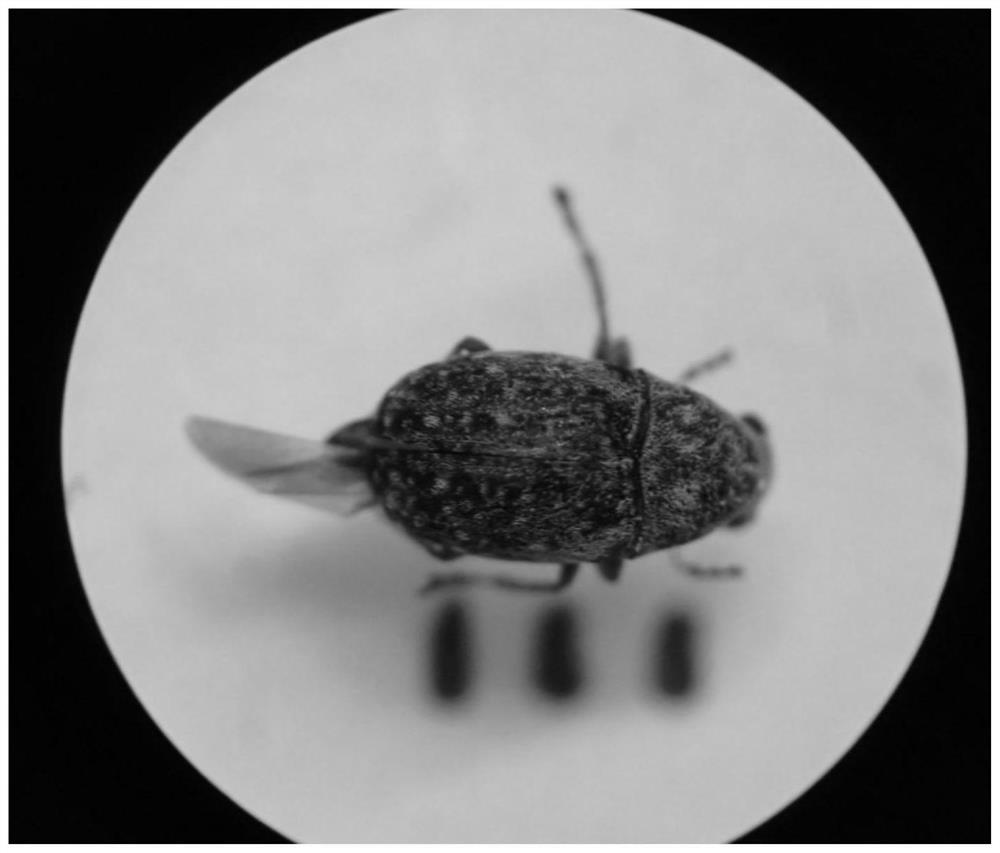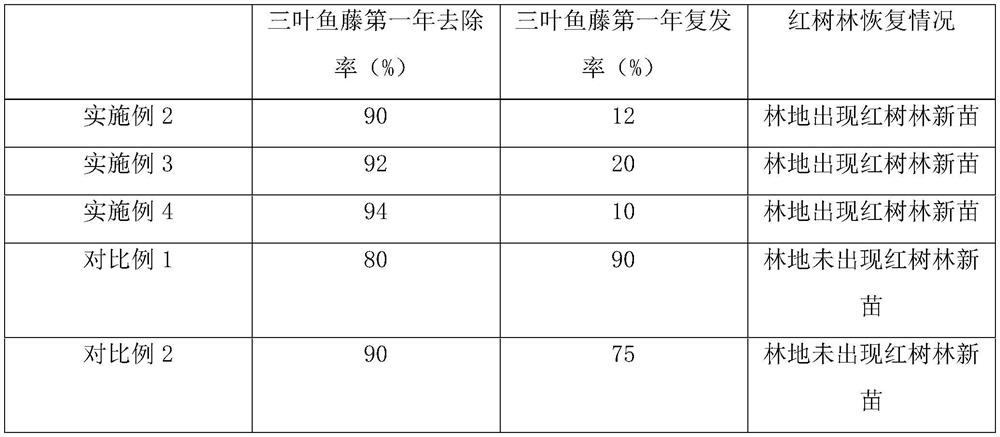Method for preventing derris trifoliata in mangrove forest
A technology of clover and mangroves, applied in horticultural methods, botanical equipment and methods, horticulture, etc., can solve the problems of difficult to remove seeds, difficult to achieve effective control, easy to recur, and achieve good parasitic ability, easy to collect and The effect of cultivation, method is simple and easy to implement
- Summary
- Abstract
- Description
- Claims
- Application Information
AI Technical Summary
Problems solved by technology
Method used
Image
Examples
Embodiment 1
[0027] Artificial breeding of Coleoptera weevils:
[0028] The Coleoptera Weevilidae insects come from Beihai, Guangxi. The female adults have a body length of 3-4mm, and the male adults have a body length of 2-3mm. The elytra and thorax are brown and densely covered with white hairs (see the appendix for details). figure 1 ), collecting deeridea seeds and Coleoptera weevils outdoors, feeding deeridea seeds and / or flower buds to the weevils of the order coleoptera, and carrying out artificial reproduction of larvae, and raising the cultivated larvae to adults Ready to release.
Embodiment 2
[0030] A control method of trefoil in mangroves, comprising the steps of:
[0031] (1) When the lowest tide level in the whole day, cut off at 10cm place the rhizome of Deryna clover in the mangrove, and pour 50mL of acetic acid solution with a volume concentration of 6% once on the base of each rhizome; Place artificially raised Coleoptera Weevils insects on the deer vine, and the placing density is 10 / strain;
[0032] (2) collection of dodder stem section: choose the field dodder with host stem section of 8cm, obtain the dodder stem section for subsequent use;
[0033] (3) From April to October every year, put the dodder stem section on the canopy position on the water surface of Deer vine, after the dodder successfully parasitizes on the deer vine, cut it off at 10 cm from the rhizome of the deer vine, It is 10% acetic acid solution 20mL that the volume concentration of every rhizome base drenches once; The placement mode of placing the dodder stem section is: select the m...
Embodiment 3
[0035] A control method of trefoil in mangroves, comprising the steps of:
[0036] (1) At the lowest tide level in the whole day, cut at the height of 20cm at the rhizome of the cloverleaf, and pour 20mL of acetic acid solution with a volume concentration of 10% at the base of each rhizome; Place artificially raised Coleoptera Weevils insects on the top, and the placing density is 20 / strain;
[0037] (2) collection of dodder stem section: choose the 25cm Cuscuta chinensis stem tip section to obtain the dodder stem section for subsequent use;
[0038] (3) From April to October every year, put the dodder stem section on the canopy position on the water surface of Deer vine, after the dodder successfully parasitizes on the deer vine, cut it off at 10 cm from the rhizome of the deer vine, It is 50mL of 6% acetic acid solution that the volume concentration is drizzled once at every rhizome base; The dodder with the host stem section is placed at the canopy of the deer vine; or th...
PUM
 Login to View More
Login to View More Abstract
Description
Claims
Application Information
 Login to View More
Login to View More - R&D
- Intellectual Property
- Life Sciences
- Materials
- Tech Scout
- Unparalleled Data Quality
- Higher Quality Content
- 60% Fewer Hallucinations
Browse by: Latest US Patents, China's latest patents, Technical Efficacy Thesaurus, Application Domain, Technology Topic, Popular Technical Reports.
© 2025 PatSnap. All rights reserved.Legal|Privacy policy|Modern Slavery Act Transparency Statement|Sitemap|About US| Contact US: help@patsnap.com


